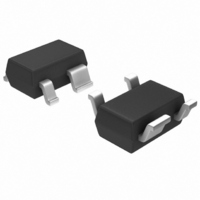MGA-71543-TR2G Avago Technologies US Inc., MGA-71543-TR2G Datasheet - Page 15

MGA-71543-TR2G
Manufacturer Part Number
MGA-71543-TR2G
Description
IC,Microwave/Millimeter Wave Amplifier,SINGLE,GAAS,SOT-343R,PLASTIC
Manufacturer
Avago Technologies US Inc.
Datasheet
1.MGA-71543-BLKG.pdf
(24 pages)
Specifications of MGA-71543-TR2G
Current - Supply
50mA
Frequency
100MHz ~ 6GHz
Gain
15.4dB
Noise Figure
0.8dB
P1db
13.1dBm
Package / Case
SC-70-4, SC-82-4, SOT-323-4, SOT-343
Rf Type
CDMA, TDMA, PCS
Test Frequency
2.01GHz
Voltage - Supply
2.7V ~ 4.2V
Lead Free Status / RoHS Status
Lead free / RoHS Compliant
Available stocks
Company
Part Number
Manufacturer
Quantity
Price
Part Number:
MGA-71543-TR2G
Manufacturer:
AVAGO/安华高
Quantity:
20 000
15
Figure 4. Gate Bias Method.
The DC supply at the input
terminal (V
through a RF choke (inductor).
The voltage at V
respect to ground determines the
device current, I
I
Maximum device current
(approximately 60 mA) occurs at
V
When using the gate biasing
method, the bypass mode is
activated when V
V
Figure 5. Device Current vs. V
This kind of biasing would not
usually be used unless a negative
supply voltage was readily
available.
Source Resistor Bias
This is the recommended method
because it only requires one
(positive) power supply. As shown
in Figure 6, Pin 3 is DC grounded
and pins 1 and 4 are RF bypassed.
V
d
Input
ref
ref
ref
vs. V
70
60
50
40
30
20
10
= 0 (i.e. V
< -2V.
0
-1
ref
is shown in Figure 5.
4
3
ref
-0.8
) can be applied
gs
= 0).
ref
d
V
ds
. A plot of typical
ref
-0.6
2
1
(Pin 3) with
= 0V and
(V)
ref
Output
& V d
.
-0.4
-0.2
The current of the amplifier (I
set by the value of the resistor
R
connected at Pin 4 as shown in
Figure 6 and RF bypassed. At least
two capacitors in parallel are
recommended for RF bypassing.
One capacitor (100 pF) for high
frequency bypassing and a second,
large value capacitor for better
low frequency bypassing. The
large value capacitor is added in
parallel to improve the IP3
because they help ground the low
frequency mixing terms that are
generated during a two tones test
(i.e. f
separation of the two tones
usually 1 to a few MHz) and thus
improve the IIP3.
Figure 6. Source Resistor Bias Method.
Maximum current (about 60 mA)
occurs when R
A plot of typical I
shown in Figure 7.
Figure 7. Device Current vs. R
Input
bias
60
50
40
30
20
10
0
. This resistor (R
0
1
– f
R bias
20
2
3
4
term which is the
40
bias
60
R
bias
d
2
1
= 0.
vs. R
(Ω)
80
bias
Output
bias
& V d
bias
100
) is
.
is
120
d
) is
140
The approximate value of the
external resistor, R
be calculated from:
where R
desired device current in mA.
A simple method for DC ground-
ing the input terminal (Pin 3) is to
use a shunt inductor that is also
part of the noise-matching
network.
Adaptive Biasing
For applications in which input
power levels vary over a wide
range, it may be useful to dynami-
cally adapt the bias of the
MGA-71543 to match the signal
level. A sensor senses the signal
level at some point in the system
(usually in the baseband circuitry)
and automatically adjusts the bias
current of the amplifier accord-
ingly. The main advantage of
adaptive biasing is conservation of
supply current (longer battery life)
by using only the amount of
current necessary to handle the
input signal without distortion.
Adaptive biasing of the
MGA-71543 can be accomplished
by simple digital means (Figure 8).
For instance simple electronic
switches can be used to control
the value of the source resistor in
discrete increment.
Figure 8. Adaptive Bias Control using Digital
Method.
R
bias
DC
Return
Path
bias
3
= 964 (1 – 0.112
is in ohms and I
1
I
d
4
bias
2
, may also
Control
Digital
√
d
I
d
is the
)




















